|
Sentimental Holland
Holland is a city in the western region of the Lower Peninsula of the U.S. State of Michigan. It is situated near the eastern shore of Lake Michigan on Lake Macatawa, which is fed by the Macatawa River. Holland was settled in 1847 by Dutch Calvinist separatists, under the leadership of Dr. Albertus van Raalte, who were escaping from persecution in the Netherlands for their opposition to scientific and social advances (e.g. contraseption, vaccination, insurance, chemical fertilizers) in their homeland.
In Holland's early history, van Raalte was a spiritual leader, as well as overseeing political, educational and financial matters. In 1847 Van Raalte established a congregation of the Reformed Church in America, which would later be called the First Reformed Church of Holland.
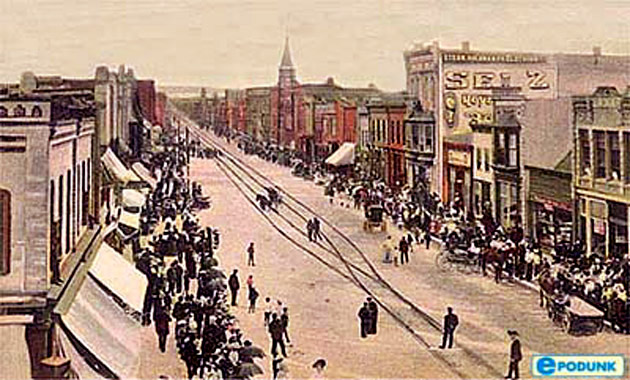
Holland City Michigan in ancient times
The city is perhaps best known for its Dutch heritage, which serves not only as a part of the city's cultural identity, but the local economy as well; the Tulip Time Festival in May and various Dutch-themed attractions augment the nearby Lake Michigan shoreline in attracting thousands of tourists annualy.
About one million tourists visit Tulip Time Festival each year, for which the community finds innovative ways to enhance self-funded projects. It has been ranked as America's third largest town festival and was named Readers' Digest's best small town festival. The Tulip Time Festival has attracted big name acts in recent years such as; Christina Aguilera in 2000, O-town in 2001, The Verve Pipe, with Holland born, lead-singer Brian vander Ark in 2003, and Jars of Clay in 2006. Ed McMahon vistted Tulip Time in 2007 along with Bobby Vinton.
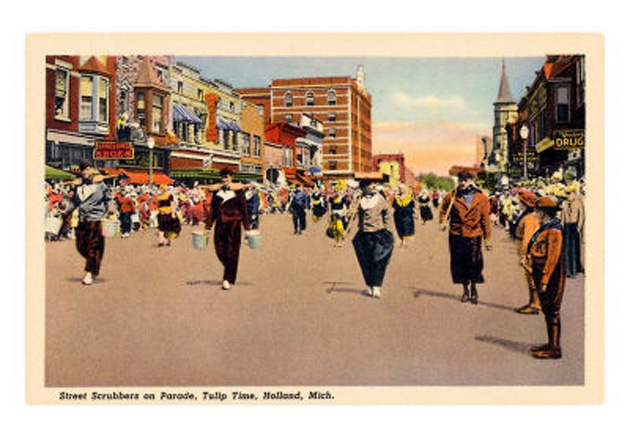
Tulips Time festival since 80 years an annual streetparade, (Volkparade, Muziekparade, Kinderparade)
Since 1929, the small city of Holland has blossomed with literally hundreds of thousands of tulips. Like most celebrations, the Tulip Festival started as a relatively small event, which was proposed by Miss Lida Rogers, a high school biology theacher. In 1927, Miss Rogers presented the idea of commemorating Holland's Dutch heritage, history and culture to the Women's Liberary Club. Her proposal was accepted, and in 1929, the City of Holland planted its first crop of 100.000 tulips. The overwhelming number of visitors to our small town resulted in the community's decision to repeat the event.
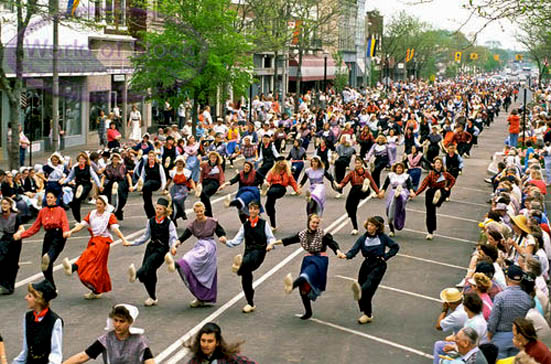
A vivid tradition of streetparade in Old Dutch costumes, over 1300 Dutch Dancers
As thousands of spectators soared to hunderds of thousands, the celibration lenghtened by days, and pageantry, costumes and parades and the popular Dutch Dancers were added to produce a week-long festival that is now over 80 years old. Visitors to the Tulip Time festival are invited to take some tulips home, in paper form. It's not allowed by city ordinance to pick live tulips from the parks.
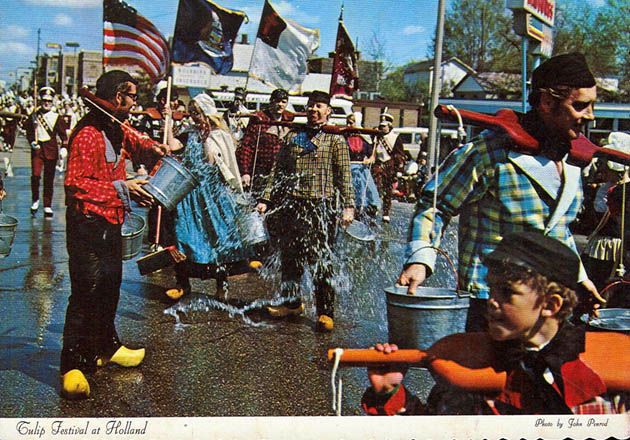
Folkloristic streetsrcubbbers for ones in a year
The history of Dutch Dance began in 1935 with local high school girls performing at the Tulip Time Festival. They were dressed in costumes and were called "Klompen Dancers." The precursor to these Dancers began 2 years earlier when a high school gym teacher Ethel Perry trained twelve students to perform Dutch Folk dances. The Dancers, then called the "Dutch Villagers," performed to the tune of "When, Oh Where, Has My Little Dog Gone?" but did not perform as part of the Festival. Originally the dancers' costumes were Delft blue with white organdy caps and aprons.
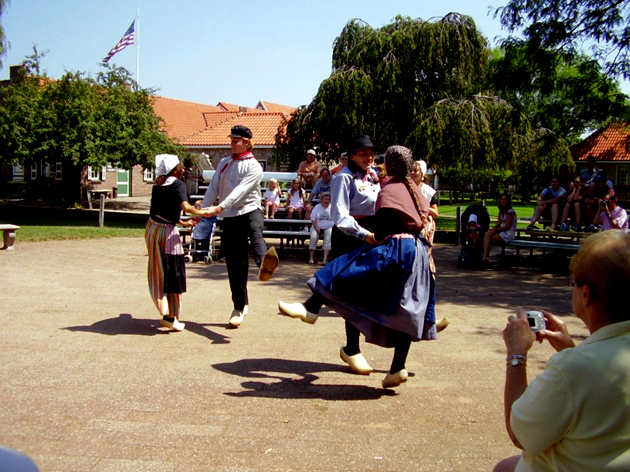
The Michigan way of klompendans (wooden shoe dance)
In 1953 a compilation of Dutch Folk music was created. Dutch Dance as we know it was choreographed and standards for costumes were developed. Over the years, as information became available, additional costumes were added and revisions were made. Today's Dancers wear costumes patterned after the traditional dress of the Dutch Provinces. Each costume is handmade by local seamstresses and carefully inspected before it can be worn in the Dutch Dance performances. There are currently over 1300 Dutch Dancers.
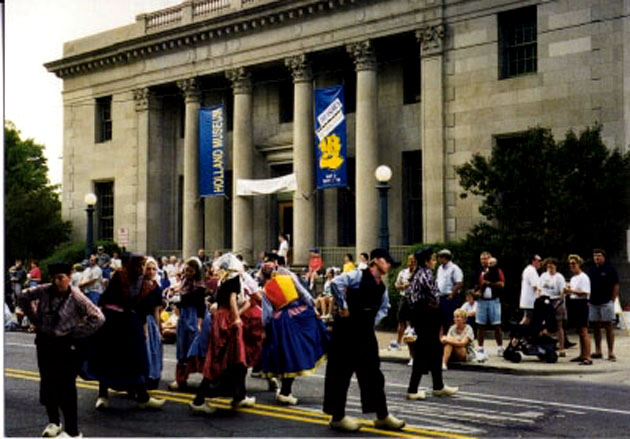
The "klompendans" in a new fashion way in front of Holland Museum
Servicepoint;
© 2011 Albert Prins

|

